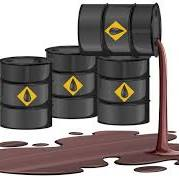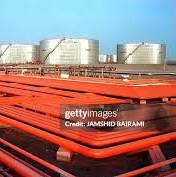How High Will Oil Prices Determine Middle East Supply-Citi, ING Predictions

Jun 20, 2025
When the wholesale oil price goes up, many people notice it first when it leads to higher petrol prices. But more expensive energy also feeds through to higher prices for almost everything, from farming to manufacturing. When it comes to food, higher energy costs can lead to higher prices on the shelf in many ways.

- Citi predicts oil prices could rise by up to 20% with a 1.1 million bpd disruption, but sees OPEC’s spare capacity as a stabilizer.
- ING forecasts Brent could surge to $120 per barrel if major supply issues occur, citing proximity of reserves to conflict zones.
- Iran is rapidly exporting oil from storage ahead of possible U.S. intervention, according to satellite data from TankerTrackers.com.
Crude oil prices could rise by between 15% and 20% from pre-war levels in case of disruption of 1.1 million barrels daily in production, Citi analysts have said, putting Brent crude’s wartime price at between $75 and $78 per barrel.
If the supply disruption is larger, above 3 million barrels daily, Brent crude could hit $90, the bank also said.
Earlier, Brent topped $77 per barrel, with ING the latest to say it could top $120 per barrel in the case of a supply disruption. Citi, however, does not believe supply disruption would have much of an effect on prices, thinking about OPEC’s spare capacity cushion. ING, on the other hand, noted that this cushion is concentrated rather close to the military action, which makes its use potentially problematic.
“Production elsewhere globally may have risen sufficiently to offset the disruption impact, particularly if the production disruption was expected,” Citi analysts said, as quoted by Reuters.
The “may” in that sentence might constitute a problem in case of an actual supply disruption in the Middle East because it suggests the rise is far from a fact and production in the world’s largest oil producer, the United States, is actually slowing down, not accelerating.

Iran, meanwhile, is in a rush to export as much oil as it can before President Trump makes his decision on U.S. involvement in the war, it seems. According to a Bloomberg report citing data from TankerTrackers.com, Iran is loading oil from storage on tankers and sending it abroad at an accelerated rate. It is also pumping more oil into the storage tanks, from where it gets loaded on the tankers, the data, based on satellite imagery of the tanks, suggested.
Since June 13, the start of the Israeli offensive against Iran, the latter has exported on average 2.33 million barrels per day, according to TankerTrackers.com data.
Oilprice.com






